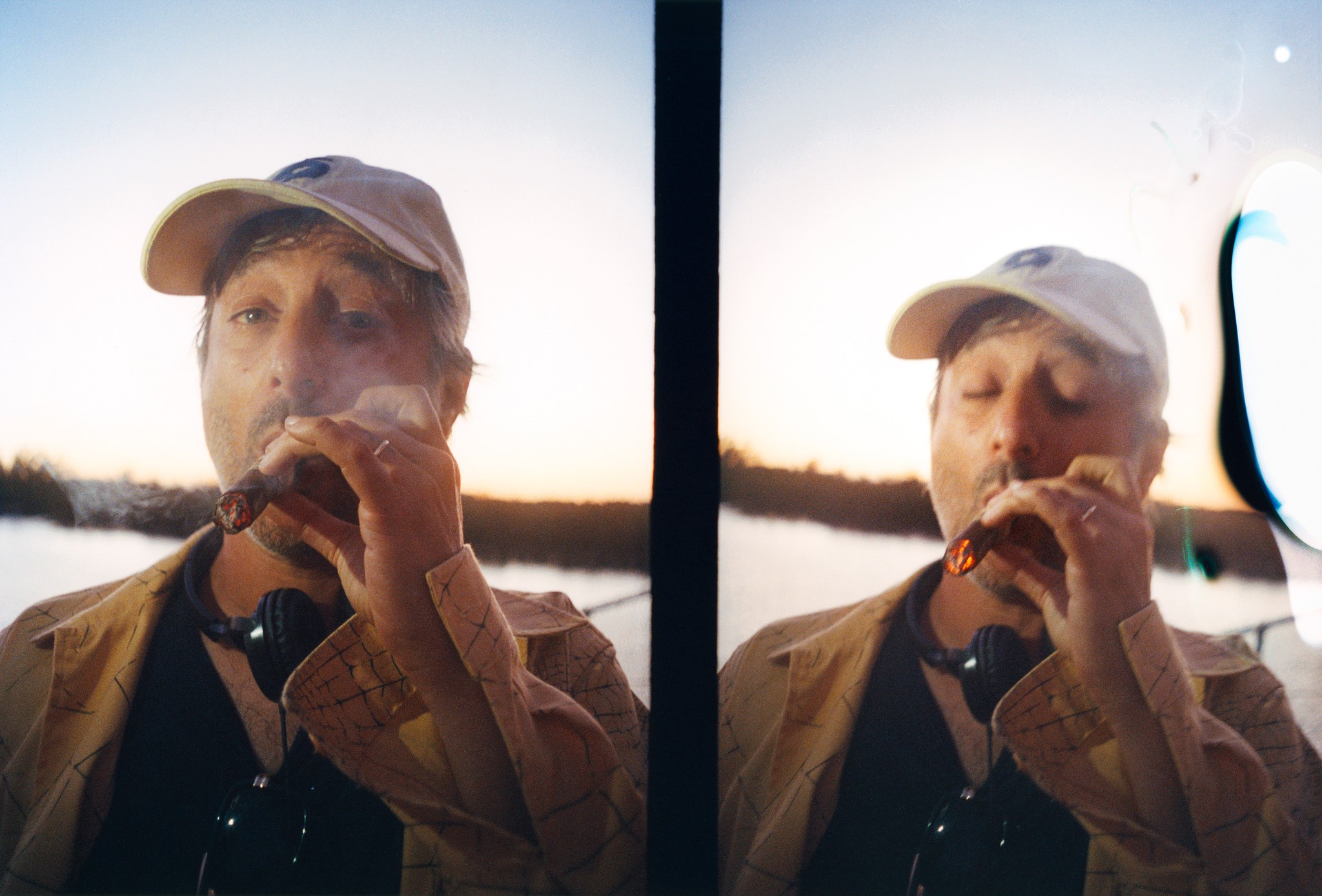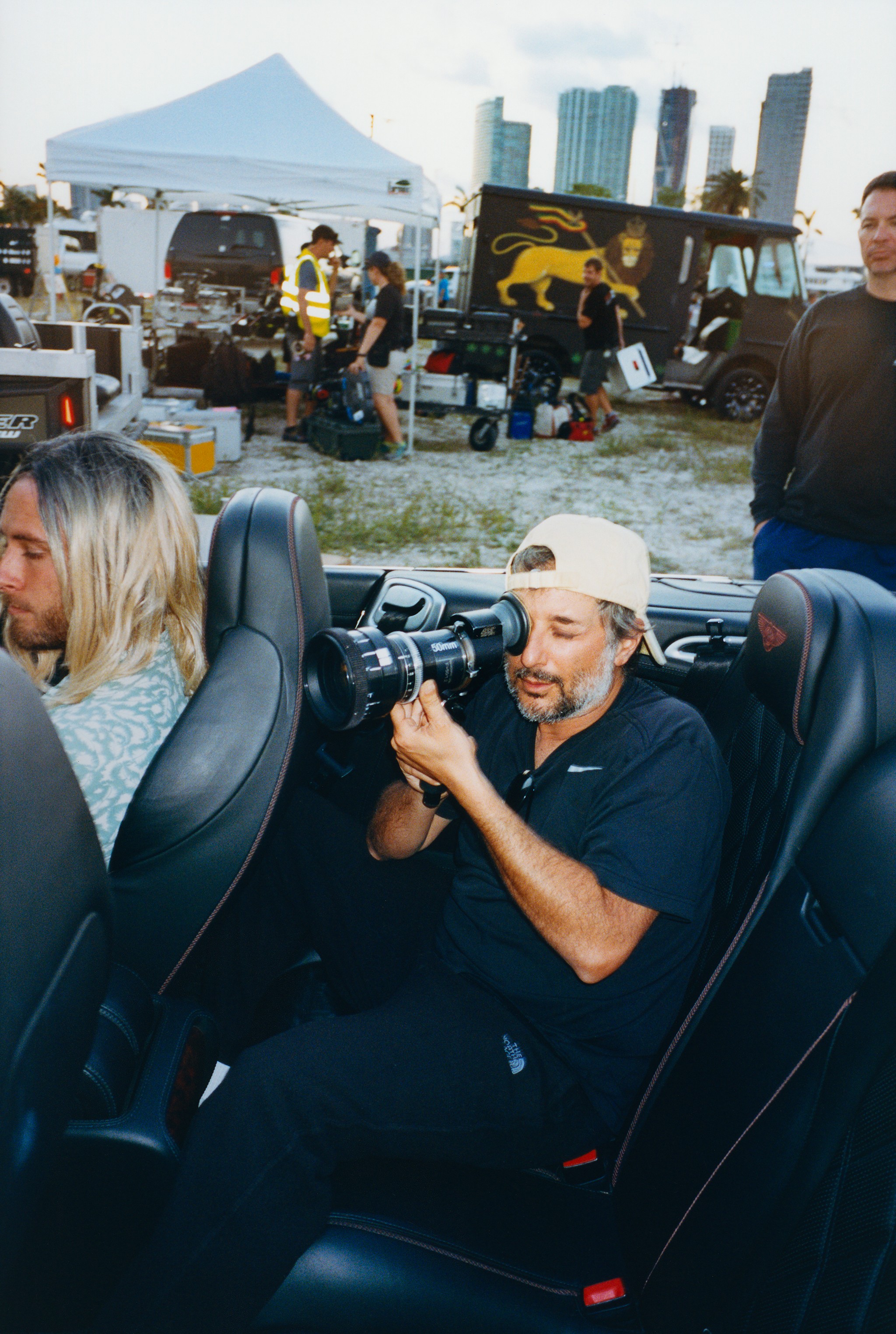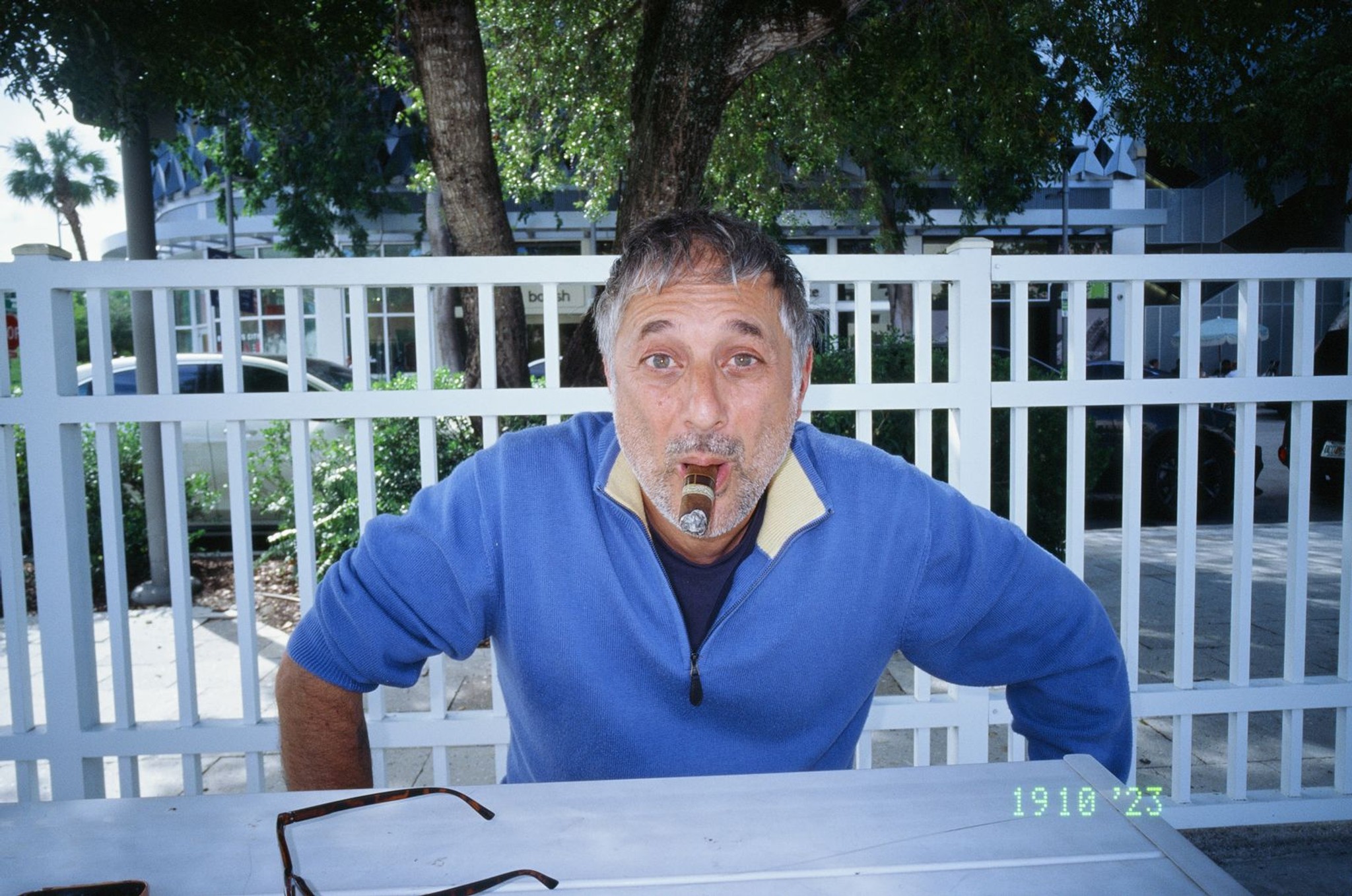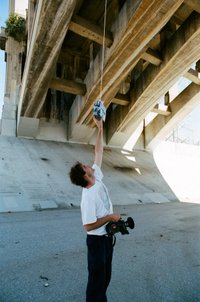Harmony Korine Interview in Miami Car Park
Harmony Korine starts a day at the office with an idea. By 5 o’clock he has two complete film scenes and a half-smoked cigar.

Seven years after the filming of Tyrone and Frank Lebon’s Inside the Bum, a documentary profiling Harmony Korine on the set of his stoner comedy The Beach Bum (2019), the short film is released as the first episode of the DoBeDo series Reely and Truly. On a recent visit to Korine's office in Miami, he explains how the disappointment of a film production falling apart led him to make The Beach Bum, and more recently, to start his futurist content company, EDGLRD.
Among the luxury retail outposts in Miami’s Design District, Harmony and his team of animators, designers, and VFX artists are at the office 3D printing a mask based on a character from their recent project, Aggro Dr1ft, an action feature made entirely with thermal cameras, VFX and AI. Aggro Dr1ft is neither a film nor a video game, but something like its own experience. In a brief tour of EDGLRD, enthused experts demonstrate how they use AI to develop characters. At another desk focused on 3D imaging, they demonstrate the mapping of a film scene. Once the scene is created, they can place the camera’s perspective wherever they want. An animator plays a clip from a project exploring what would happen if leprechauns started a gang war in Tokyo against the Japanese organised crime group, Yakuza. In another corner, a different what-if is being plugged in and mapped.
Unlike the fixed processes of the Hollywood film industry, EDGLRD is where Korine can walk in with five ideas, and by the evening, have a few scenes for a film, some key characters animated as 3D models, and a selection of products associated with the project to sell on their website. As someone known for his imagination, his work with the design collective uses technology to create new possibilities for genre and sensory immersion. Outside, on the flat Floridian pavement lined by tidy palm trees, Harmony looks for the half-smoked cigar he hid in the bushes (he doesn’t bring them into the office), and lights it as he sits on a picnic bench on the side of a car park.

HARMONY KORINE: Let's do, like, five minutes.
TYRONE LEBON: Yeah, you've got a lot of people in there.
HK: I also have to run and get my kid. Rachel's in Nashville, so I have to go take my kid to tennis class. What's this for?
TL: This is going to be for when we put Inside The Bum on the DoBeDo website. I think it's really good to bridge between what was going on when we shot the film with you and what you’re doing now.
HK: Okay.
TL: So, will you say quickly how the new film came about?
HK: Aggro Dr1ft? I started this company with some friends and a lot of animators and visual effects people and designers. We were experimenting with the idea of not really making films but interpreting what's sensory or what's more experience-based. Maybe what comes after film, for us. So we had this concept and experimented a bunch with visuals and sound and made this film called Aggro Dr1ft. We shot here (in Miami) using thermal cameras, VFX, AI and other elements to kind of create a different type of experience.
TL: What's interesting to me, and correct me if I'm wrong, about The Beach Bum, is that your interest in doing a stoner comedy came out of what had been a tricky couple of years, when you'd done a whole big production that fell apart before shooting.
HK: The Trap, the movie, The Trap.
TL: Can you talk about how The Trap led to The Beach Bum and how The Beach Bum led to this?
HK: I was going to make this movie called The Trap, and it was a pretty big film, a revenge movie that takes place in the rap world. It's here in Miami. It's very intense, kind of ultra-violent, but super moody. I spent two years putting it together and then right before shooting happened, the schedules with actors started to fall apart. And then the movie itself just basically fell apart before we could shoot it. But I'd spent a year storyboarding the whole thing and prepped it and we were ready to go. So it was pretty painful because the movie was intense. So I didn't want to sit around. I needed to make a film and I didn't want to make anything close to The Trap. The Beach Bum really was like, oh, I need to laugh.
I had grown up on Cheech and Chong movies and I wanted to make a full-on stoner film in Key West. I just wrote it very quickly and we put it together. And then within a year of having the idea, we were shooting it, and The Beach Bum came out. Then I just started losing interest on a personal level in going to movies and watching films and stuff. I still love movies, but I started watching and looking at other things. I was getting more into gaming. I'd spent a year playing Zelda and Elgin's Ring and then went down a wormhole of Call of Duty and became much more interested in playing with the idea of world-building and gaming aesthetics. Even just watching my kids play Pokemon Go, I was like, wow, there's something that just seemed fun in a way that making films, normal films, wasn’t. So then I was like, maybe there's a world where we could put this company together that's closer to a laboratory, that has a tech component, but also a design element to it.
Then I spent a year with my partner, and we put this company together called EDGLRD, which is devoted to this idea of new futurist content and singularity. We can play with the idea where all the art forms — music and films and animation and gaming, and all these things — can coalesce. Which then led to Aggro Dr1ft. Maybe as an experiment, I was like, let's try to make this thing that’s more mood-based. We never really set out to make what I would call a film. In some ways, it functions like a movie, but it shouldn't feel like a movie. I wanted it to be closer to an aesthetic drug or something. And so we started playing with thermal cameras and AI and then putting VFX on it. There wasn't a conventional script, it was more like trying to invent an experience. That's really what Aggro Dr1ft is.
TL: So the filmmaking process fundamentally changes? Because you can just walk in here with more of a vision for some scenes and don't need to sit and hide away and write a script for a few months, find a producer to fund you, etcetera. You just can come in every day, be inspired and create quickly and spontaneously, and create a selection of images and scenes which I suppose you could call ‘a film’ if you wanted to?
HK: Exactly. It is like an incubator for ideas. So a lot of it will just be like, what happens if you take a leprechaun and throw him into the red light district in Tokyo and then they start fighting Yakuza? And then we have some of the artists start to make renderings and 3D work on it. It starts with the germ of an idea so it's like 10 seconds long, or something like that. And then you're like, oh, this is interesting. This could be a mobile game, but the mobile game could also be a feature, potentially. Or the design could be used for clothes. That's how it builds. And now it's gotten to the point where the VFX people and the artists will kind of sit in there and create a character. A lot of it is character development and mood. We have artists that are just creating a background, an environment. So it's like they're building something in a haunted house in the Netherlands or in West Virginia or something. Then some guy in a hazmat suit walks by and that's all it is.
TL: I saw that one in the Jungle scene.
HK: So, what we do is use that little thing and then go to someone. For instance, I'll say, hey, Tyrone should try to pitch an idea. Maybe Tyrone would be interested. And then show someone those clips and say, if I did this or that or this, how would you respond to the clip? Do you know what I’m saying? We don’t work in a super traditional way where it's like you have a writer write a script, come pitch a concept, and then find a director. It really is not in that mould.
TL: So I could say to you, for example, I have a set of scenes I’ve shot already but I'd like you to digitally animate some of the cast and us create some other scenes. Plus I’d like to make some products to go with the project… That's something EDGLRD could support?
HK: Exactly. That's exactly right. That's very close to what it is. It is really a design collective. You know what I mean? You could say, what would it look like if EDGLRD created a neighbourhood in Panama, but it was inspired by a haunted house in 1980 where the kids are all BMX riders, and then we'll just design it and from there, things happen. We're doing this witchy one right now, which is based on character. And so now we're looking at, maybe that's a horror film or something, or a funny child's movie. We're still deciding. Maybe it's just like some kind of cute child’s movie. That's going to be one of the projects.
TL: What's the best place for people to tune into what's coming out?
HK: Yeah, look at Instagram. And then the edglrd.com site. That'll be the place where everything drops and then you can get everything.
TL: Thank you. Five minute interview done. Can I take a picture as well?


